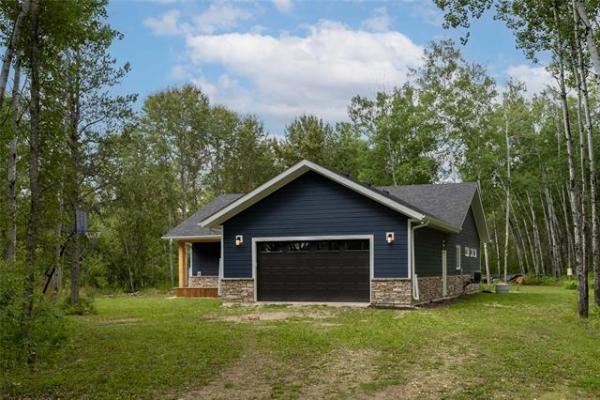QUESTION: I came across your column online and was wondering if you could provide me with some advice. In 2015, we purchased an older Toronto home that was built in 1924.
While undergoing renovations, we later learned there were moisture issues. This included efflorescence on the brick wall and mouldy insulation behind the drywall in the bathroom. We had the home waterproofed from the outside, by a highly rated firm, and then had the basement finished.
In the past year or two I noticed that the marble floor tile in the basement bathroom looked darker in a small area, less than one square foot, between the shower enclosure and the bathroom vanity.
I also noticed the grey grout looked white in certain spots. I initially thought it was a messy caulking job by our contractor, but realized it might actually be efflorescence, after reading up on it online. When I asked the water proofer to look at it, he said it was likely because the home is in an area with a high water table and because the home was built with the basement concrete slab directly on dirt.
There are also now brown stains in the area of the wet tile. This wetness seems to be only present in the spring. We don’t experience any wetness in the carpeted areas of the basement, as we had our contractor lay down a plastic subfloor product over the concrete floor.
We have dark grey porcelain tile in the laundry room, but haven’t noticed anything unusual there. I am not sure if that’s because the tile is less porous or just darker than the marble. When we purchased the home, the inspector’s report from the seller did mention that the ground wasn’t properly graded away from the house by the side where I’m noticing the wet tile, but I’m hoping the water proofer would have fixed that afterward.
Anyway, what would you suggest we do? How do we get a proper diagnosis of what is going on, so that we can resolve this once and for all? I also would like to know if this is a job for a home inspector or a different professional?
— Sincerely, Grace Hwang.
Answer: It is quite natural to overreact to minor imperfections or defects in building materials after a major renovation is complete, but beware that any conclusions for causes of these defects will only be opinions. Undertaking repairs for such a small issue like discoloured tiles or grout may not yield any improvement, and spending time and money on inspections may be a waste of resources.
Installation of flooring in a bathroom, especially a natural masonry product like marble, is almost always subject to some moisture-related issue. This may be due to high humidity levels in the bathroom or simply water dripped onto the floor from the shower or sink. This moisture may seep into the natural stone tile, or grout, and will often cause some discolouration. Often, the changes in colour will be temporary, until the material fully dries. But the changes may be more permanent if the wetting is frequent or the conditions for quick drying are not present. This could be the case in your bathroom, as the marble tiles are installed on top of a cooler concrete floor slab, which may retain moisture from the home or sub-slab soil. The fact that the nearby porcelain tiles, or surrounding marble ones, are not discoloured also may be proof that the moisture is from the bathroom fixtures rather than from below.
Especially when you install the stone tile directly over a concrete basement floor slab, some efflorescence and discolouration is typical. Because the grout and marble tile are natural masonry products, colours are never completely consistent. They can change over time with varying amounts of dirt and moisture from foot traffic, which will affect appearance. They can also wick up moisture from the sub-slab soil, but it is more likely that the moisture causing the changing appearance is coming from the bathroom.
The first thing to try is resealing the tile and grout with a masonry sealer. Because these products are naturally porous, the surface should be sealed to prevent water penetration, particularly important in bathroom installations. The clear sealer is easy to install, but the floor must be perfectly clean before application. If this was never done after installation, it may explain the different appearance in tiles that regularly get wet from the shower and those that remain dry. If the problem disappears a few days or weeks after application, then you have found your answer without very much fuss.
If the problem reoccurs after properly sealing the flooring, and only after the winter thaw, then dampness underneath the floor slab may be responsible, but major remediations may be required to fix this minor flaw. Excavation outside the home, or tearing up the basement floor slab, to install or replace weeping tiles may be the only permanent solution. The cost for this will be far in excess of anything reasonable for a little discolouration of your bathroom flooring. Regrading on the exterior of the house should be done if the soil is eroded or sloping toward the foundation, but this may have limited effect on the soil moisture under the basement floor.
The main thing to remember is not to make a mountain out of a molehill when dealing with cosmetic issues like floor tile colour. Since marble is a natural product, there will already be natural flaws, so some slight differences in colour should be expected, as long as the flooring or grout is not deteriorating.
Calling in a home inspector, flooring contractor, mason, or tile contractor may only muddy the waters, as all may have different opinions as to the cause.
Doing moderate to major remediations for this very small defect will certainly be more trouble than it is worth.
Ari Marantz is the owner of Trained Eye Home Inspection Ltd. and the past president of the Canadian Association of Home & Property Inspectors — Manitoba (cahpi.mb.ca). Questions can be emailed to the address below. Ari can be reached at 204-291-5358 or check out his website at trainedeye.ca.
trainedeye@iname.com




